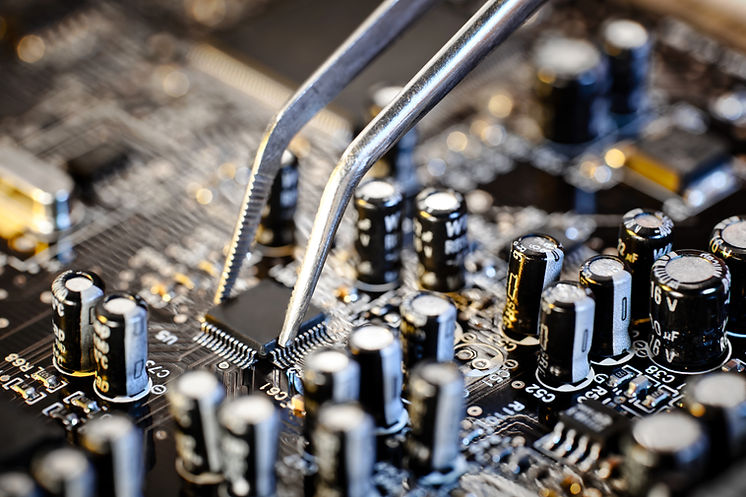IP Addressing
- Emmanuel and Andrea's Tech Tips

- Dec 11, 2020
- 3 min read
An IP Address is a logical numeric address that is assigned to every single computer, printer, switch, router, or any other device that is part of a TCP/IP-based network. Each device connected to a network has its own unique IP address to communicate with one another. Each host, which sends or receives information on a network, and network devices must have an IP address within the same network that enables them to communicate with each other.
The Media Access Control (MAC) address is assigned to a host's Network Interface Card (NIC) and is known as the host's physical address. The MAC is responsible for the transmission of data packets to and from the network interface card, and to and from another remotely shared channel. Regardless of where the host is placed on the network, the physical address remains the same.
An IP address consists of a series of 32 binary bits (1s and 0s). The 32 bits are grouped into four groups of 8-bits which are called octets. Since it is quite hard for us to read, write, and remember this format, dotted-decimal notation is used. For which each octet is presented as its decimal value, separated by a decimal point or period. When the host configures the network, this notation is used, such as 192.168.1.8.
How to convert an IP address in a decimal form to binary?
The method of converting decimal numbers into binary that we will show is considered the easiest method to convert it. Let us make the notation 192.168.23.58 as our example.

1. Discrete the notation and form a table of octets. Number each octet with the exponent of two in descending order starting from 2⁷ which is equivalent to 128 and ending with 2⁰ which is equivalent to 1.

2. Look for the greatest power of 2 that will fit into the given total value of each octet. Put 1 beneath the exponent of 2 if it will add up to form the sum which is the given total value of each octet. If not, put a 0 beneath it.

3. Arrange the 1s and 0s you've got from beneath the table from left to right and you will get the binary equivalent of the given IP address in decimal form.

When engaging in a 32-bit binary, it is important to stay focused because if you mistype just 1 bit, the address would be different, and the host may not be able to communicate on the network. The logical 32-bit IP address is composed of two parts, the first part identifies the network and the second part identifies the host on a network, in which both parts are required in an IP address. If the host has an IP address, the first three octets identify the network portion of the address while the last octet identifies the host.

This is called hierarchical addressing because the network portion indicates the network on which each unique host address is located. Routers only need to know how to reach each network, not the location of each host.
Five Classes of IP Addresses:
Class A
This class is used for large networks. Class A is applied in large companies and some countries. Its address ranges from 1.0.0.1 to 126.255.255.254 which can support 16 million hosts on each of 127 networks.
Class B
This class is used for medium-sized networks. Class B is implemented by universities. Its address ranges from 128.1.0.1 to 191.255.255.254 which can support 65,000 hosts on each of 16,000 networks.
Class C
This class is used for small networks. Class C performs ISPs for customer subscriptions. Its address ranges from 192.0.1.1 to 223.255.254.254 which can support 254 hosts on each of 2 million networks.
Class D
Class D is used for special use for multicasting. Its address ranges from 224.0.0.0 to 239.255.255.255 which is reserved for multicast. Multicast is a method of routing data on a computer network that allows one or more senders to communicate efficiently with a group of receivers.
Class E
Class E is used for experimental testing. Its address ranges from 240.0.0.0 to 254.255.255.254 which are reserved for future use, or research and development purposes.
Note that ranges 127.x.x.x are reserved for local host. For example, 127.0.0.1 is the local host address. Range 255.255.255.255 broadcasts to all hosts on the local network.
And now, you know what an IP Address is, what it is for, how to convert an IP Address from decimal notation to binary notation, and all the different types of IP Addresses. IP Addressing is really simple once you've familiarized yourself with the concept. We hope that this post helped you become more familiarize as to what an IP Address is, and how it works in our post-modern world of internet connectivity.





Comments